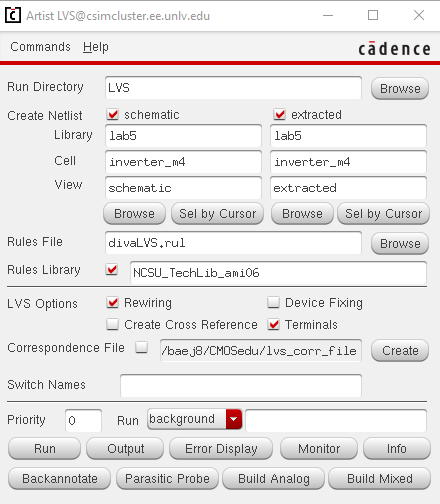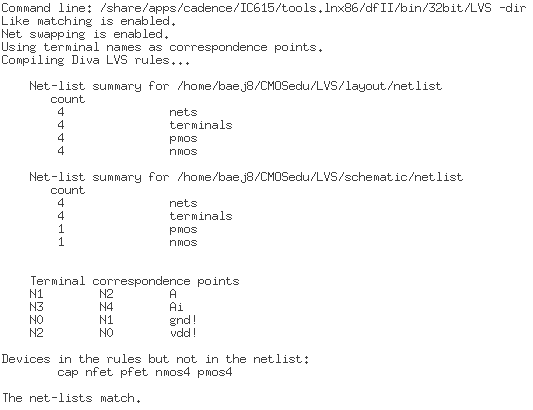Lab 05 -
EE 421L
Authored
by Junho Bae
baej8@unlv.nevada.edu
October
11, 2017
Pre-lab
work
Back-up all my work from
this lab and the course.
Complete Tutorial
3.
An inverter which was used in the lab below was drafted.
Lab
Work
Drafting CMOS inverters
12u/6u Inverter
I first drafted the schematic of the inverter using a PMOS
(w=12u l=600n) and an NMOS (w=6u l=600n).
The
schematic had two pins in comparision to the layout which had four pins
to cover the global power and ground. The bodies of the PMOS and NMOS
were connected to their respective source terminals, their gate
terminals were tied together to create an input pin, and their drain
termials were connected together to create an output pin.
This process was covered in the prelab; therefore, moved on to draft
the second inverter.
| Schematic |
Symbol |
 |
 |
To
draft the layout of the inverter, I used pre-existing cells (ntap,
ptap, m1_poly, pmos, and nmos) with a few addtional connections to
connect the 4 terminals to match the schematic.
| Layout |
Extracted |
 |
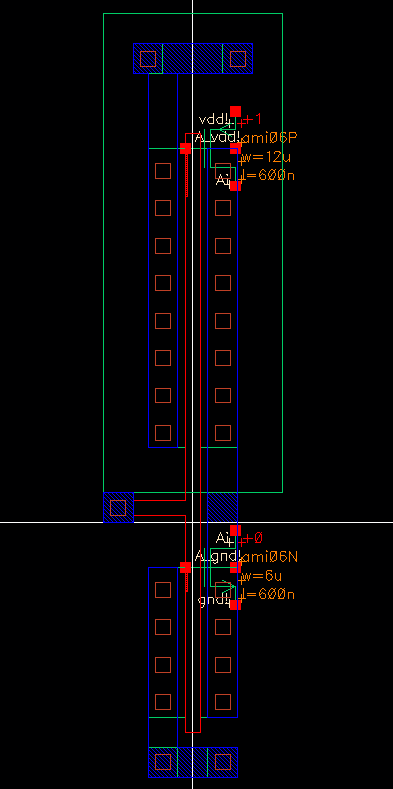 |
DRC successful

LVS
successful
Drafting CMOS inverters
48u/24u inverter
Similarly, the schematic of the second inverter was drafted using the
same methods as above.
This time around, the 'multiplier' parameter of the MOSFETS were
adjusted.
| Schematic |
Symbol |
 |
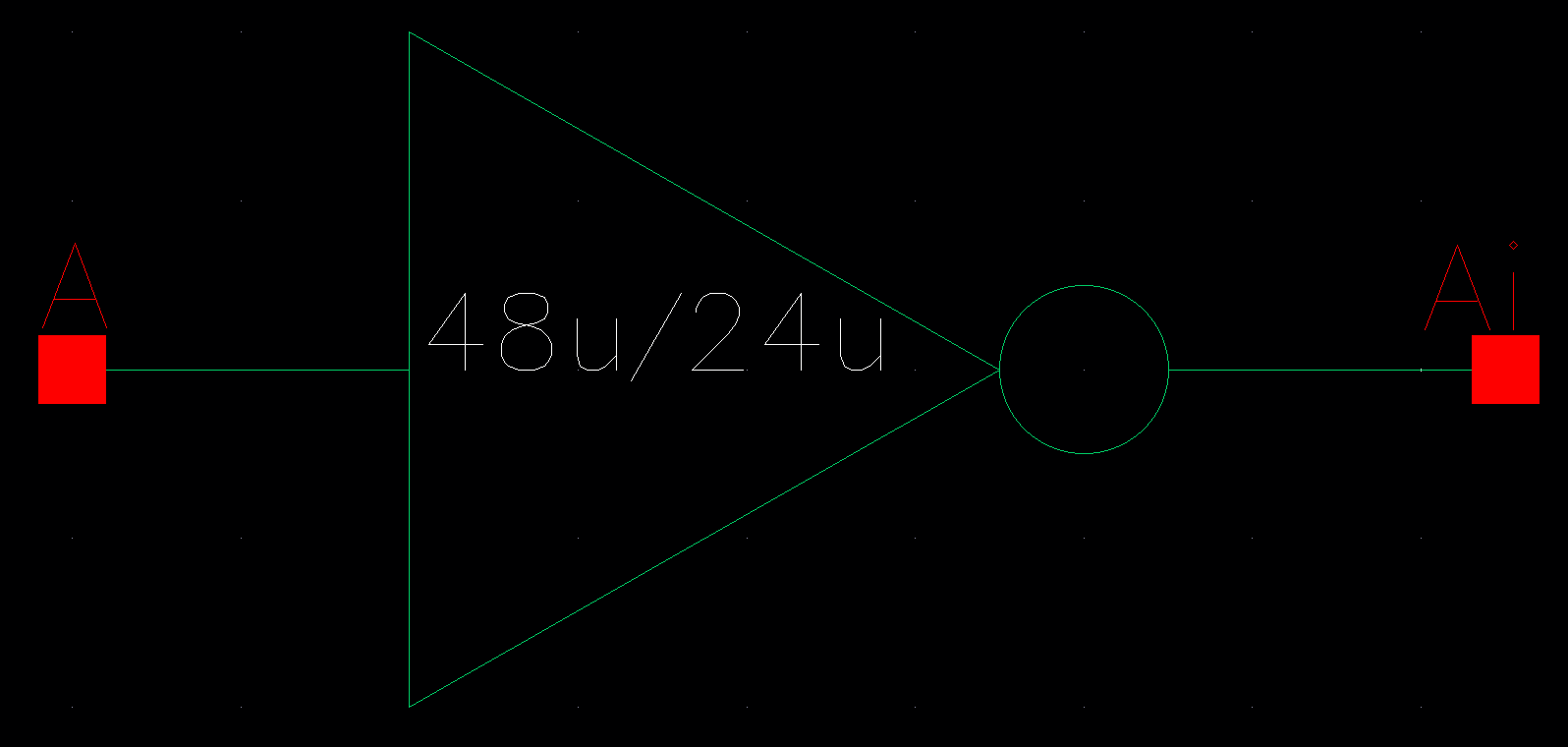 |
Just like the layout for the first inverter, I connected the terminals
of the MOSFET accordingly.
The deciding factor of which terminals were the source and drain
terminals was decided on the greater area.
| Layout |
Extracted |
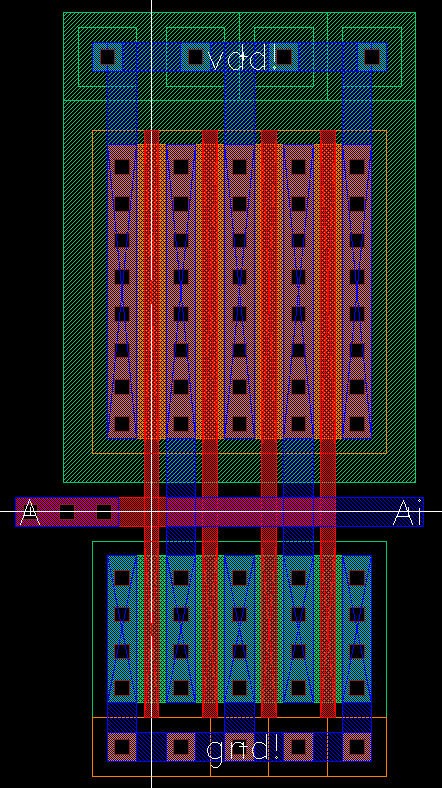 |
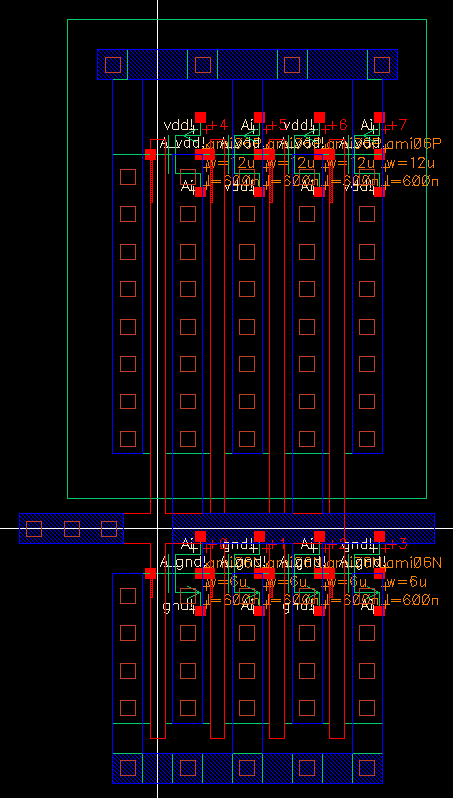 |
DRC
successful

LVS
successful
SPICE
simulations
12u/6u Inverter
| Capacitive
Load |
Schematic |
Spectre |
UltraSim |
| 100 fF |
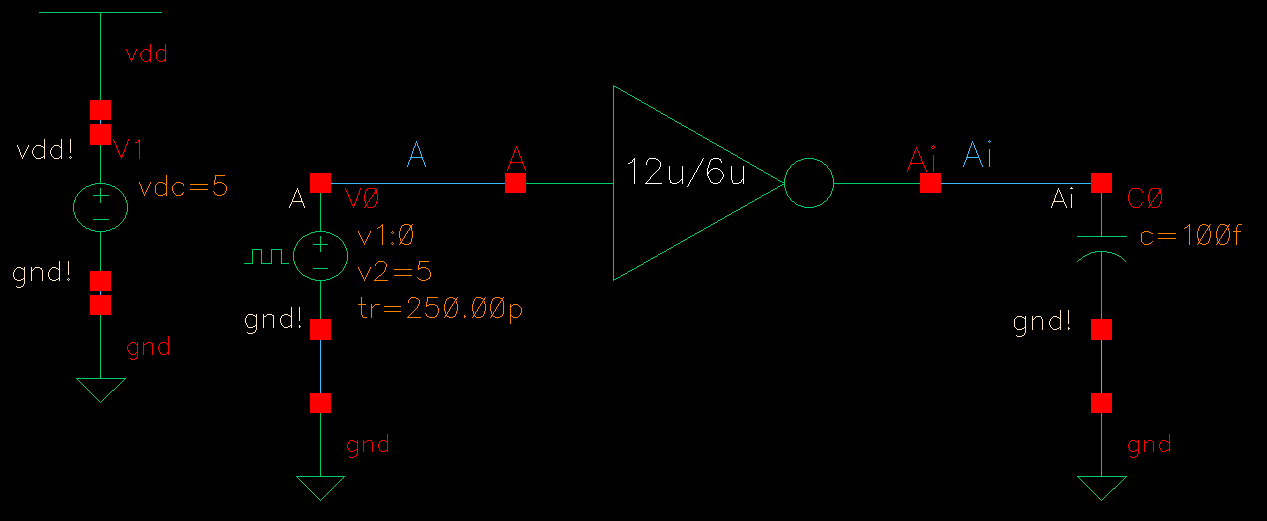 |
 |
 |
| 1
pF |
 |
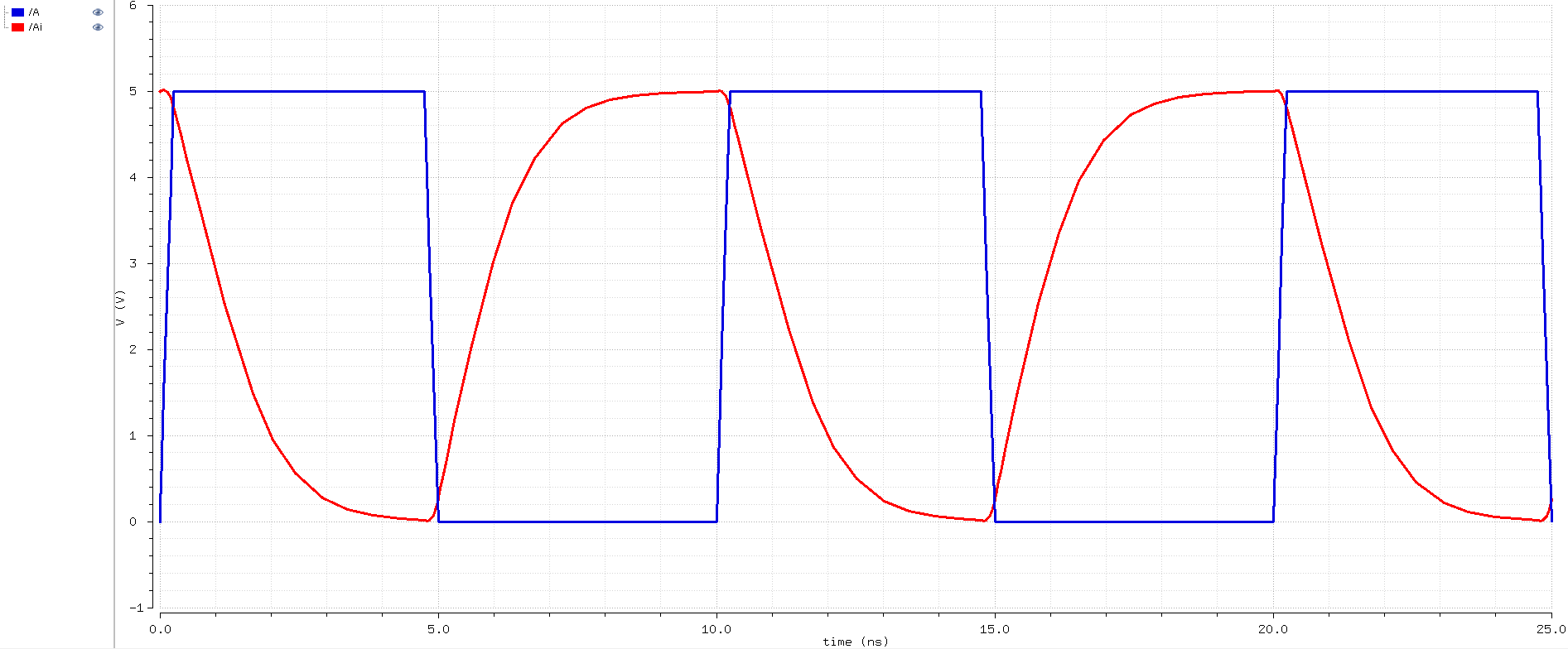 |
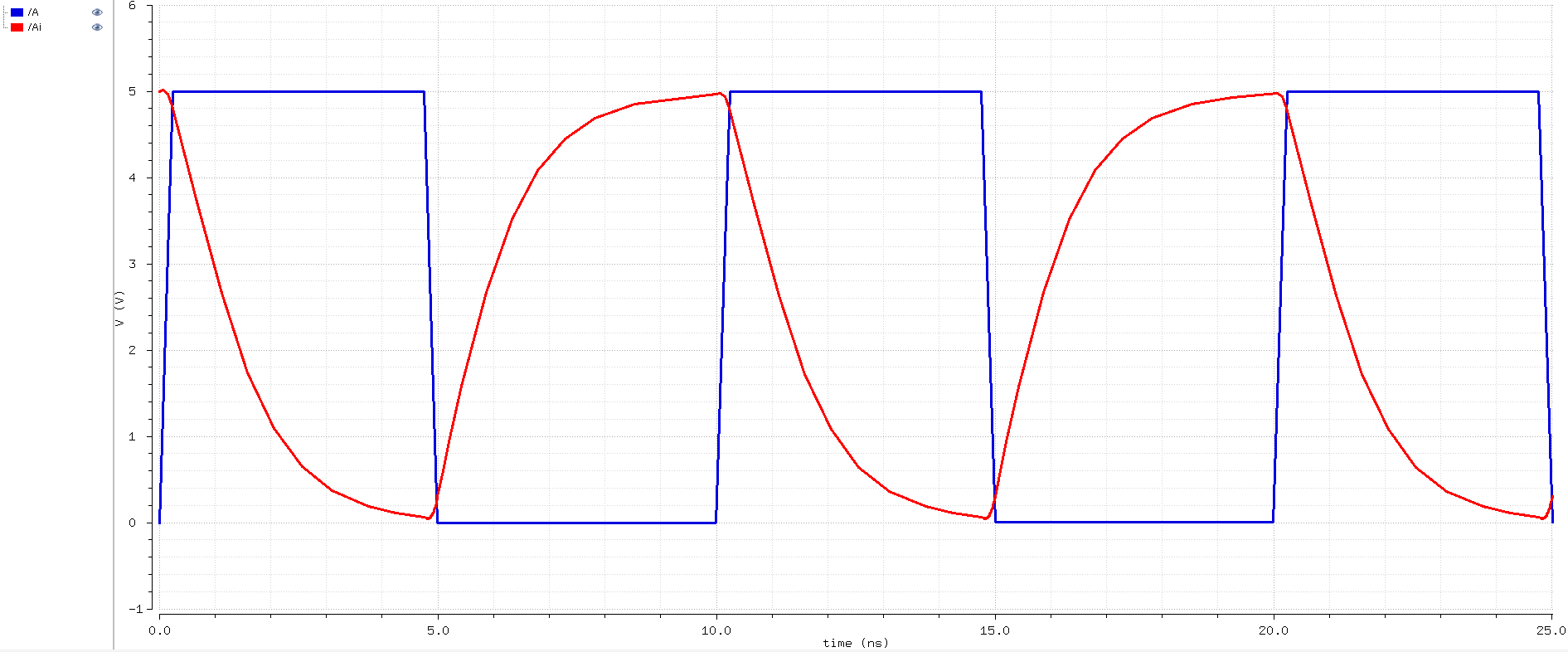 |
| 10
pF |
 |
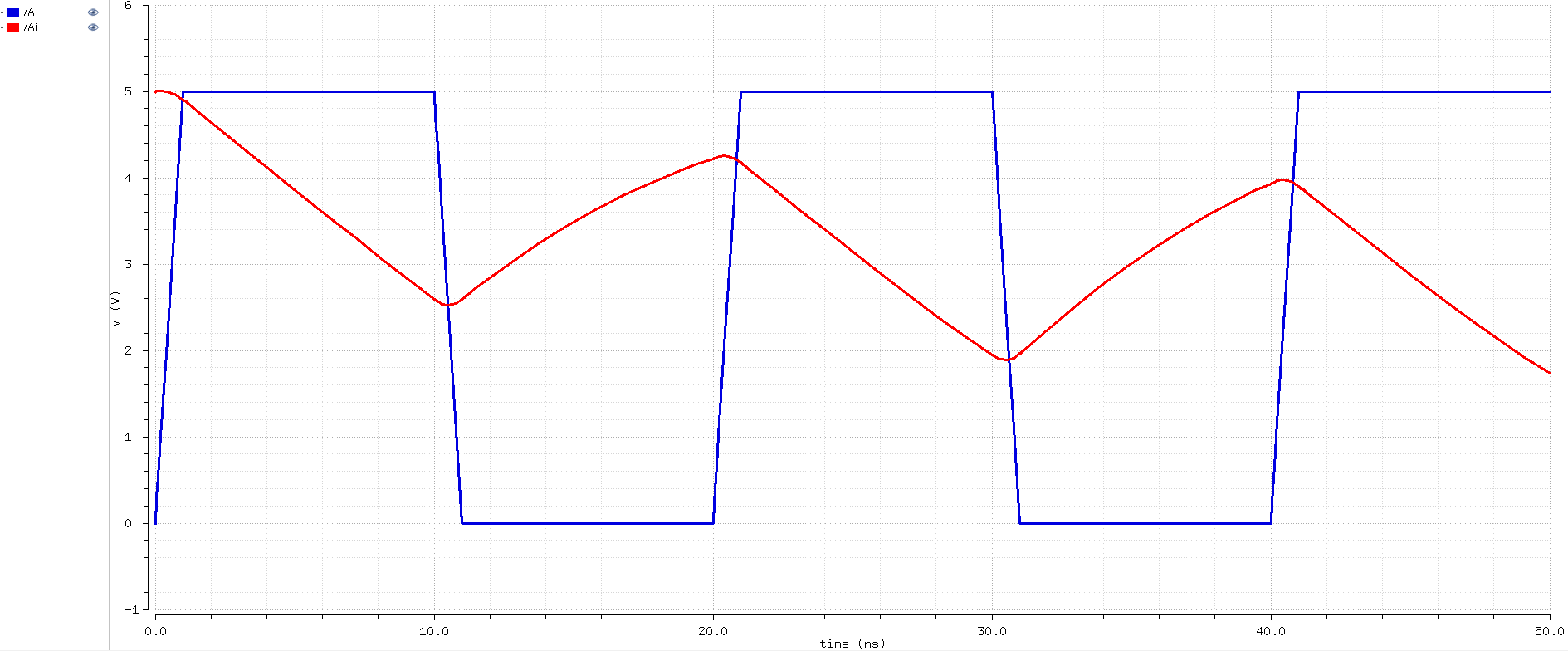 |
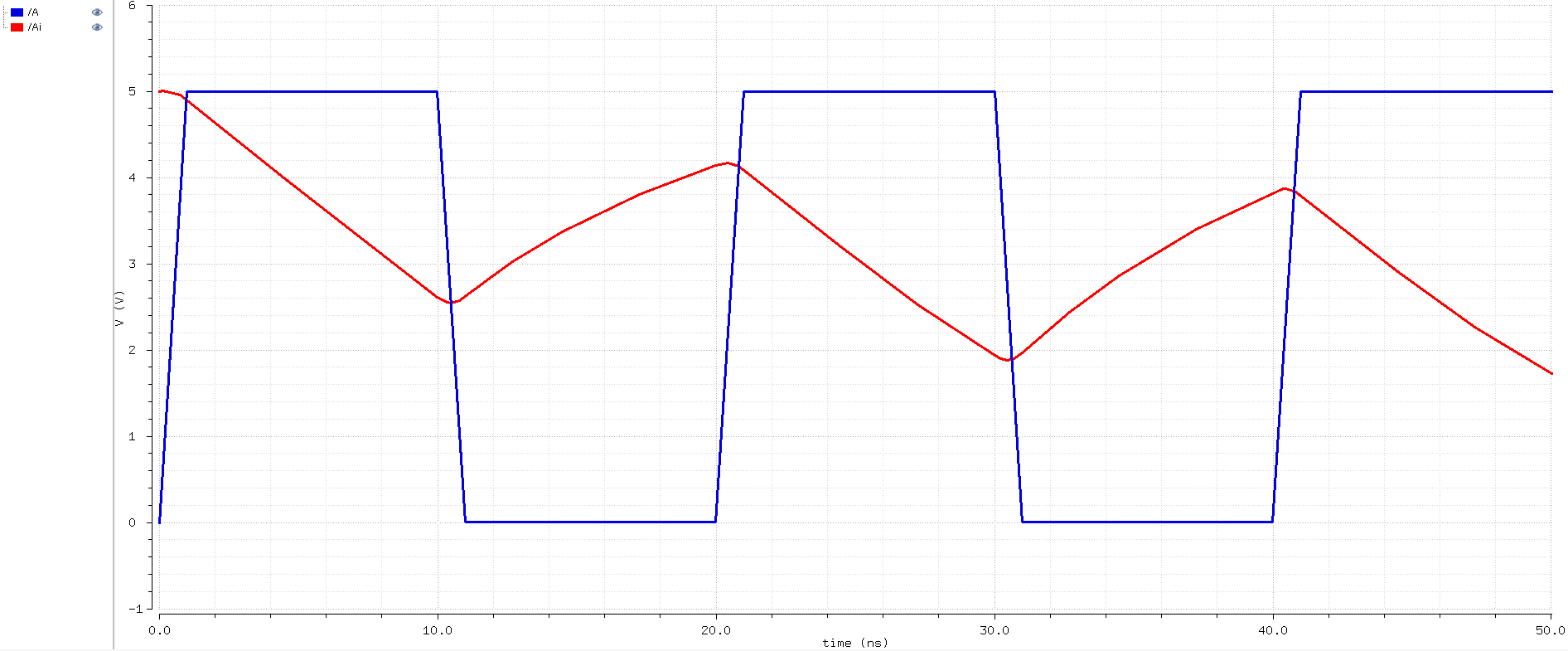 |
| 100
pF |
 |
 |
 |
As
the capacitor values increased, the inverted signal was affected more
and more. Because it takes longer to charge and discharge the
capacitors due to an increase in time delay, the capacitors could not
be charged fast enough which resulted in poor output signals. This
could be resolved by decreasing the frequency of the input signal, or
keeping the capacitive load to a minimum.
In addition, there were
minimum differences between the normal simulation tool that Cadence
uses (Spectre) and Cadence's fast SPICE simulator (UltraSim).
SPICE
simulations
48u/24u inverter
| Capacitive
Load |
Schematic |
Spectre |
UltraSim |
| 100 fF |
 |
 |
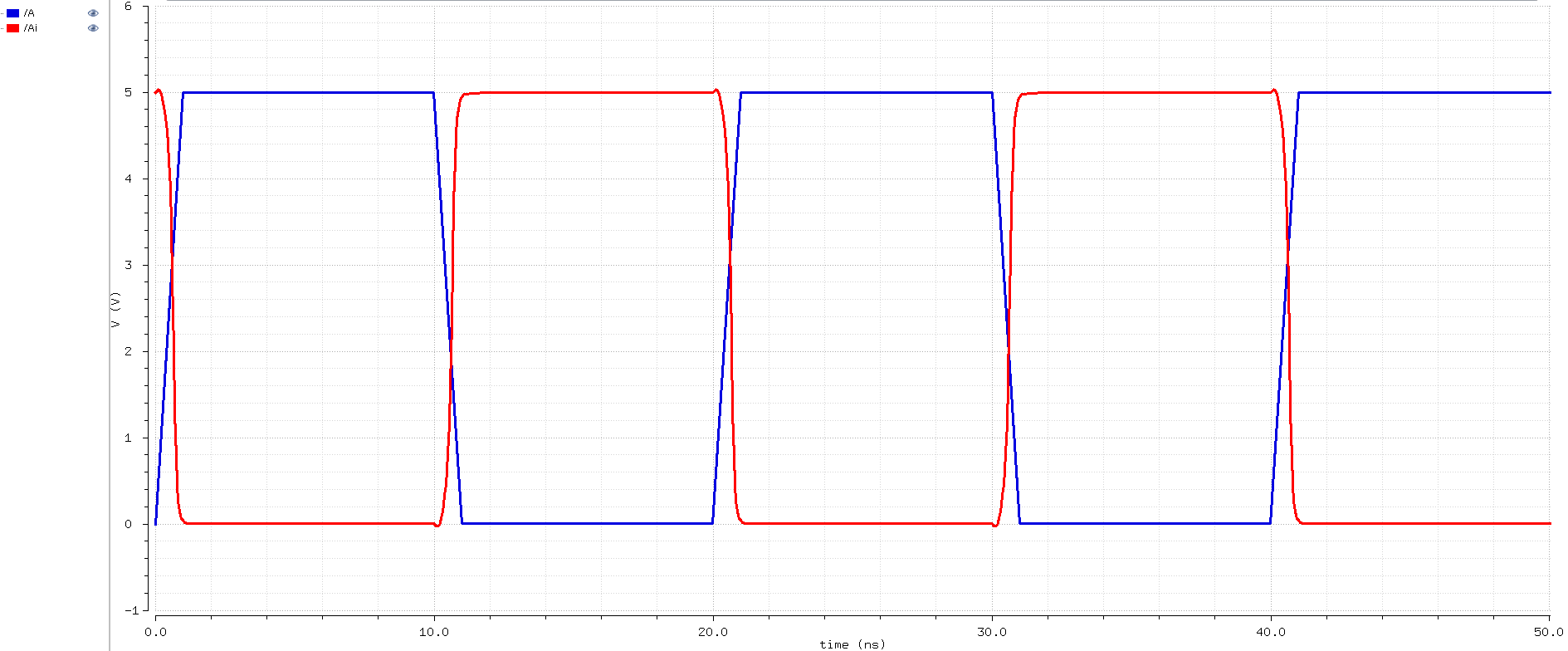 |
| 1
pF |
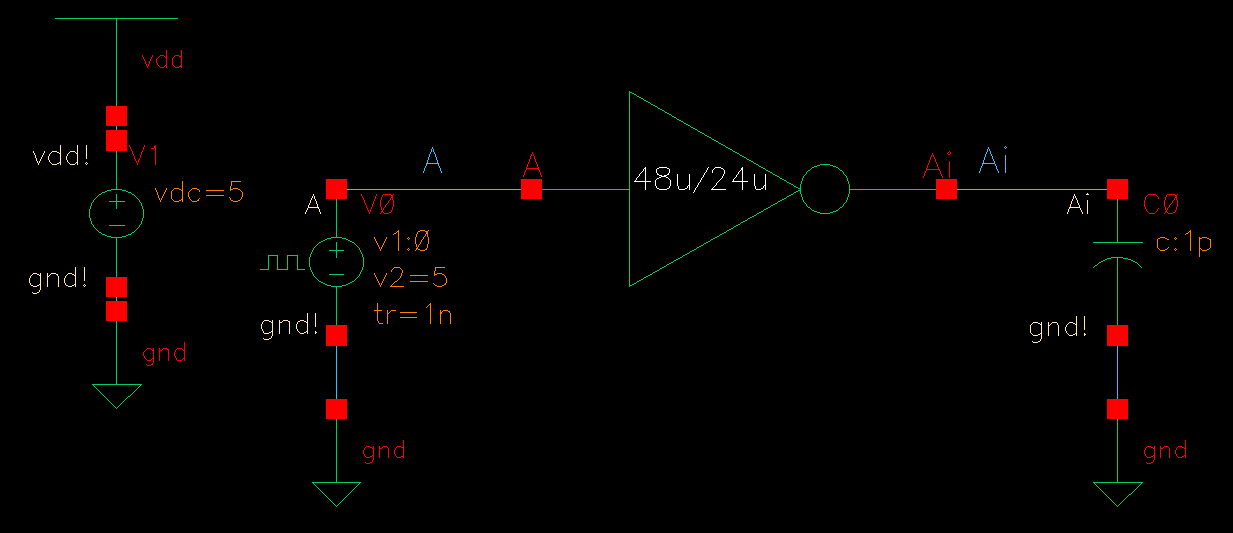 |
 |
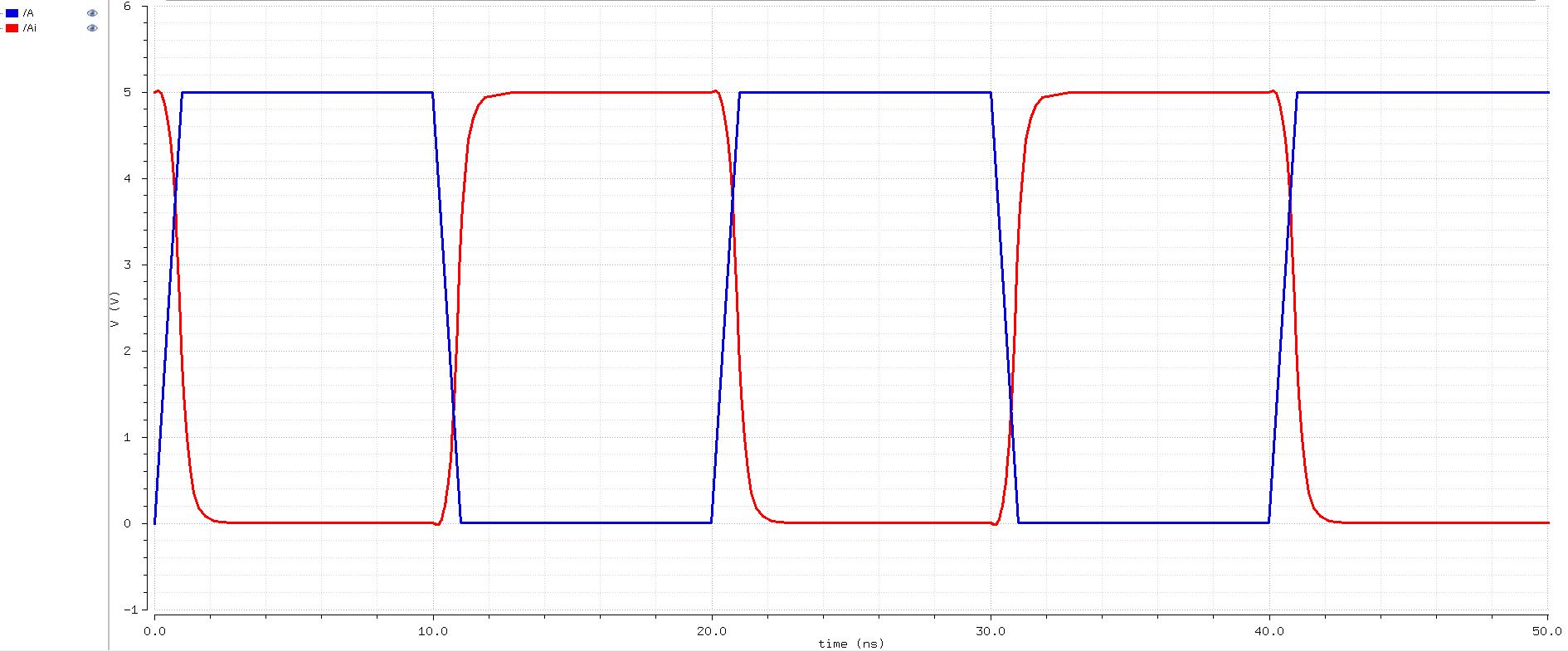 |
| 10
pF |
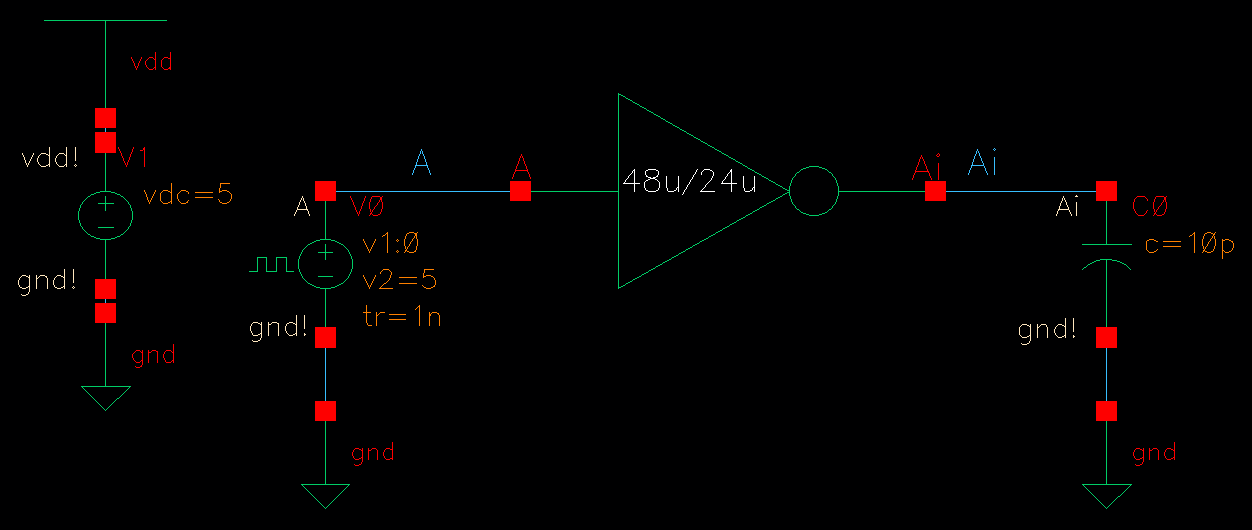 |
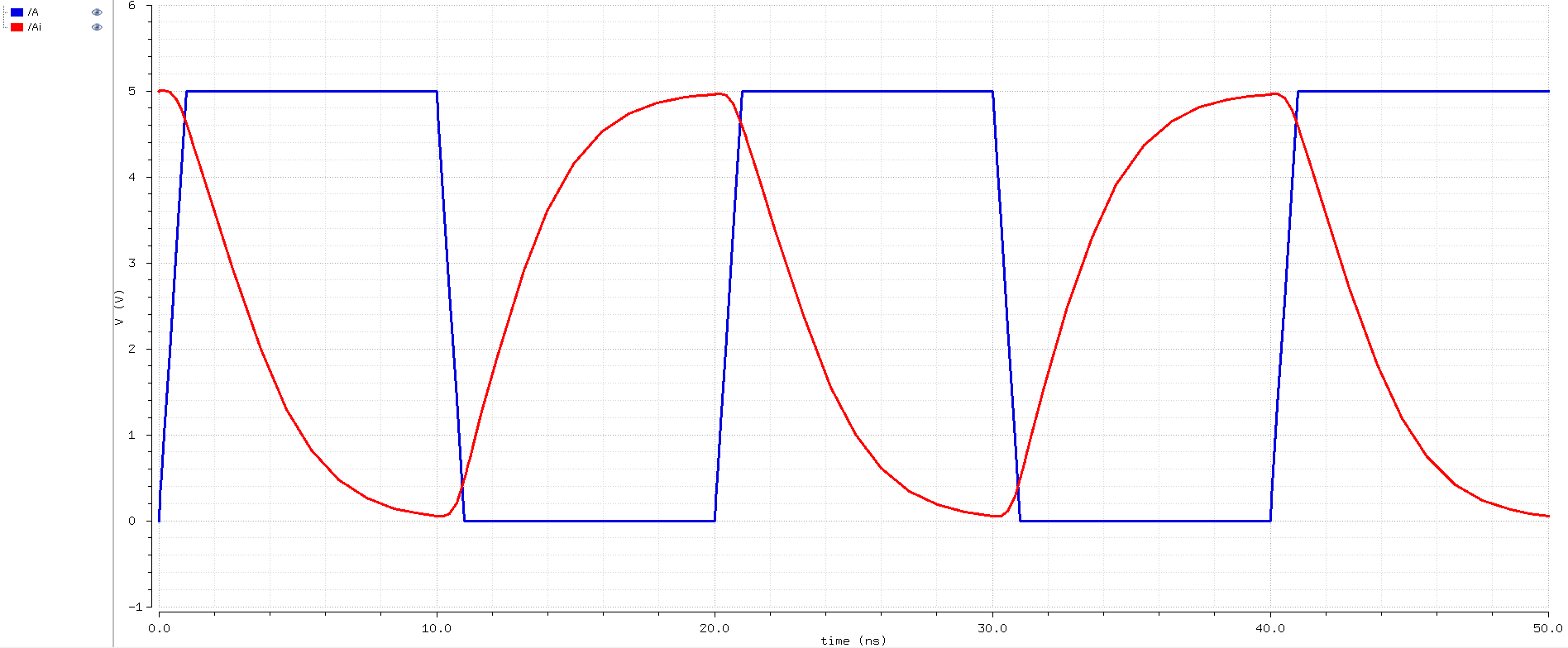 |
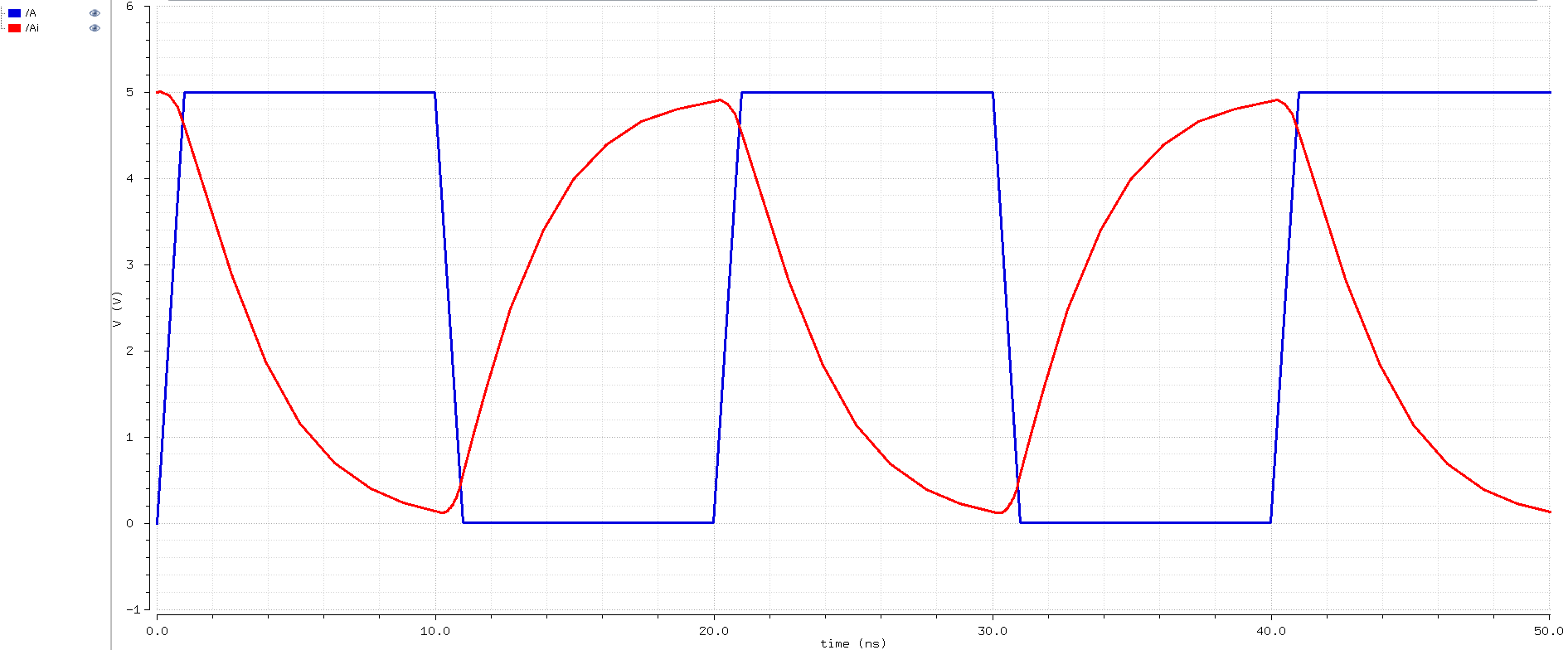 |
| 100
pF |
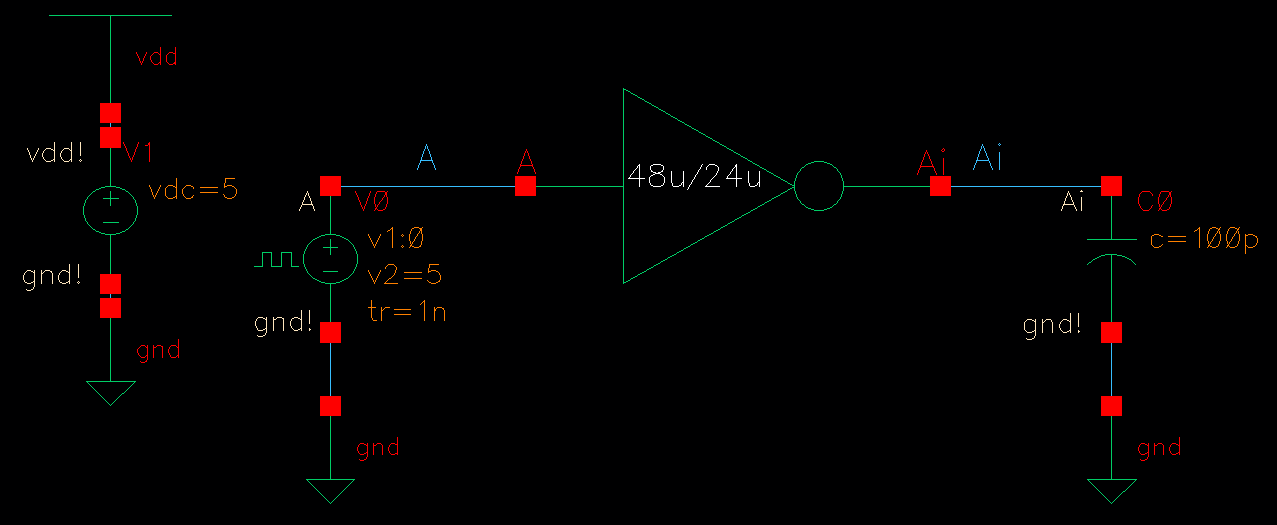 |
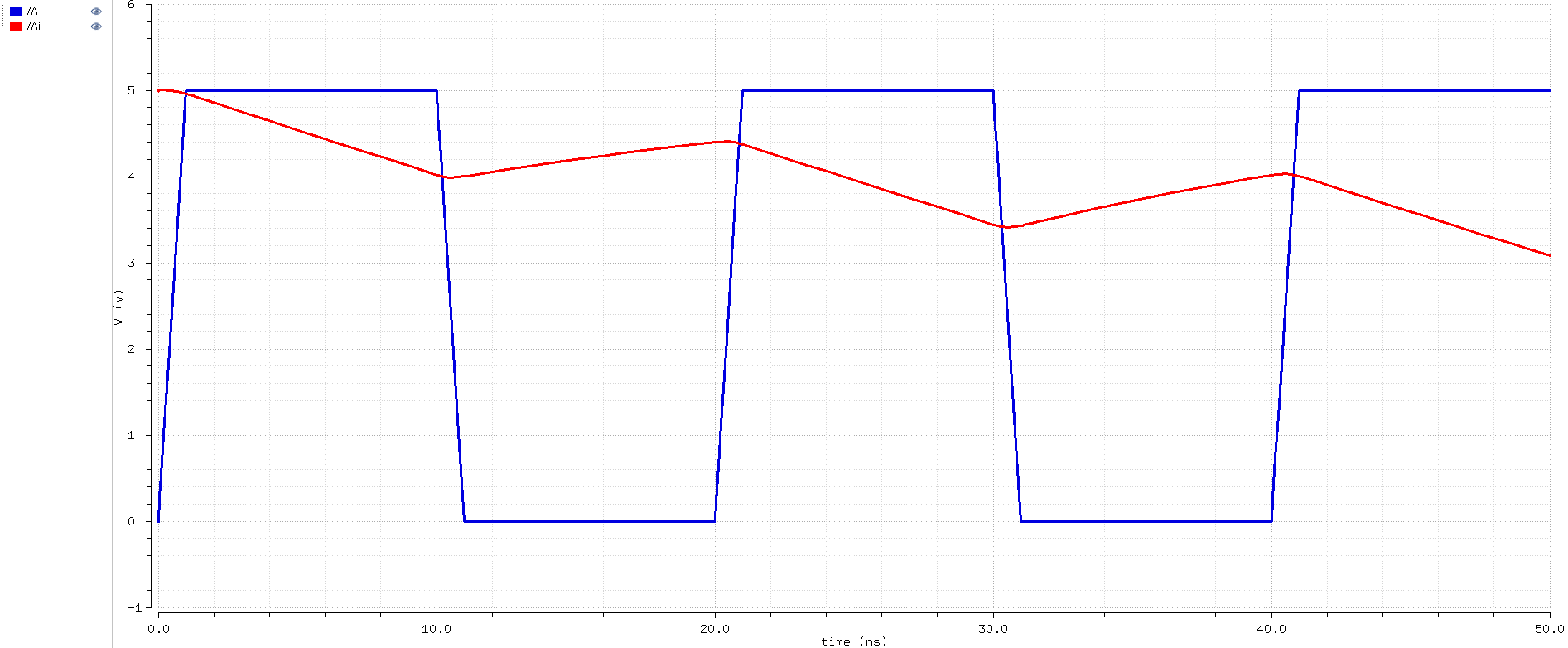 |
 |
The
pattern from the first inverter still persisted; however, the inverter
was able to handle greater capacitive loads due to more current flowing
through the inverter. The time delay of the simulations were shorter
than the inverter with a 'multiplier' parameter of 1, but became
irrelevant as the capacitive load increased past a certain extent.
Although the simulations were faster, there wasn't much of a loss in
accuracy when using the UltraSim tool.
Final
design directory: lab5_jb.zip
Return
to Junho's Labs
Return
to EE421L Labs














